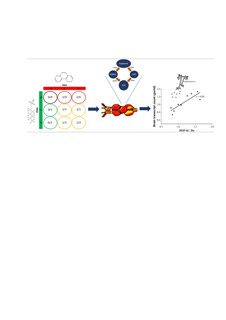Modulation of neuro-dopamine homeostasis in juvenile female Atlantic cod (Gadus morhua) exposed to polycyclic aromatic hydrocarbons and perfluoroalkyl substances
| dc.contributor.author | Khan, Essa Ahsan | |
| dc.contributor.author | Bertotto, Luisa B. | |
| dc.contributor.author | Dale, Karina | |
| dc.contributor.author | Lille-Langøy, Roger | |
| dc.contributor.author | Yadetie, Fekadu | |
| dc.contributor.author | Karlsen, Odd Andre | |
| dc.contributor.author | Goksøyr, Anders | |
| dc.contributor.author | Schlenk, Daniel | |
| dc.contributor.author | Arukwe, Augustine | |
| dc.date.accessioned | 2020-02-13T11:39:29Z | |
| dc.date.available | 2020-02-13T11:39:29Z | |
| dc.date.created | 2019-07-03T18:28:45Z | |
| dc.date.issued | 2019 | |
| dc.identifier.citation | Environmental Science and Technology. 2019, 53 7036-7044. | nb_NO |
| dc.identifier.issn | 0013-936X | |
| dc.identifier.uri | http://hdl.handle.net/11250/2641514 | |
| dc.description.abstract | The dopaminergic effect of PAH and PFAS mixtures, prepared according to environmentally relevant concentrations, has been studied in juvenile female Atlantic cod (Gadus morhua). Benzo[a]pyrene, dibenzothiophene, fluorene, naphthalene, phenanthrene, and pyrene were used to prepare a PAH mixture, while PFNA, PFOA, PFOS, and PFTrA were used to prepare a PFAS mixture. Cod were injected intraperitoneally twice, with either a low (1×) or high (20×) dose of each compound mixture or their combinations. After 2 weeks of exposure, levels of plasma 17β-estradiol (E2) were significantly elevated in high PAH/high PFAS treated group. Brain dopamine/metabolite ratios (DOPAC/dopamine and HVA+DOPAC/dopamine) changed with E2 plasma levels, except for high PAH/low PFAS and low PAH/high PFAS treated groups. On the transcript levels, th mRNA inversely correlated with dopamine/metabolite ratios and gnrh2 mRNA levels. Respective decreases and increases of drd1 and drd2a after exposure to the high PAH dose were observed. Specifically, high PFAS exposure decreased both drds, leading to high plasma E2 concentrations. Other studied end points suggest that these compounds, at different doses and combinations, have different toxicity threshold and modes of action. These effects indicate potential alterations in the feedback signaling processes within the dopaminergic pathway by these contaminant mixtures. | nb_NO |
| dc.language.iso | eng | nb_NO |
| dc.publisher | American Chemical Society | nb_NO |
| dc.title | Modulation of neuro-dopamine homeostasis in juvenile female Atlantic cod (Gadus morhua) exposed to polycyclic aromatic hydrocarbons and perfluoroalkyl substances | nb_NO |
| dc.type | Journal article | nb_NO |
| dc.type | Peer reviewed | nb_NO |
| dc.description.version | acceptedVersion | nb_NO |
| dc.source.pagenumber | 7036-7044 | nb_NO |
| dc.source.volume | 53 | nb_NO |
| dc.source.journal | Environmental Science and Technology | nb_NO |
| dc.identifier.doi | 10.1021/acs.est.9b00637 | |
| dc.identifier.cristin | 1709933 | |
| dc.description.localcode | Locked until 15.5.2020 due to copyright restrictions. This document is the Accepted Manuscript version of a Published Work that appeared in final form in [Environmental Science and Technology], copyright © American Chemical Society after peer review and technical editing by the publisher. To access the final edited and published work see https://doi.org/10.1021/acs.est.9b00637 | nb_NO |
| cristin.unitcode | 194,66,10,0 | |
| cristin.unitname | Institutt for biologi | |
| cristin.ispublished | true | |
| cristin.fulltext | postprint | |
| cristin.qualitycode | 2 |
Tilhørende fil(er)
Denne innførselen finnes i følgende samling(er)
-
Institutt for biologi [2514]
-
Publikasjoner fra CRIStin - NTNU [37219]
